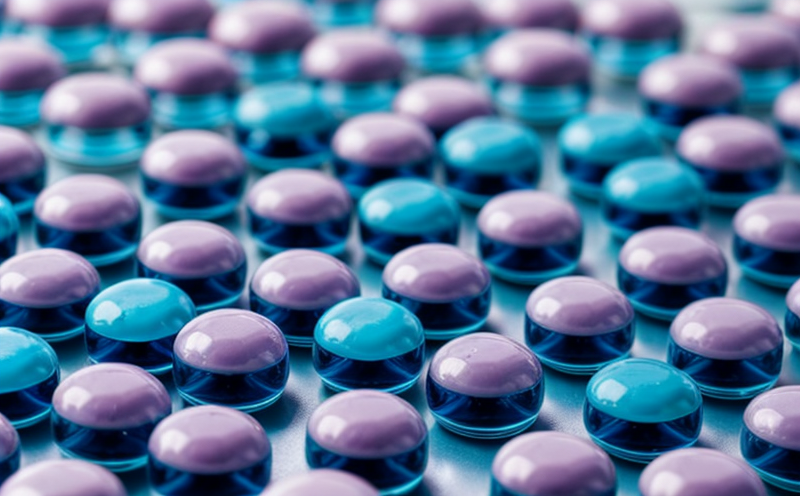USP Disinfectant Effectiveness Testing
The USP [1] <1072> Disinfectant Effectiveness Testing is a critical standard that ensures the efficacy of disinfectants used in pharmaceutical and healthcare settings. This service evaluates how well a disinfectant can kill microorganisms, ensuring compliance with regulatory standards for product safety.
The testing process involves several key steps. Firstly, the specimen is prepared by inoculating the test solution with specific microorganisms that are relevant to the intended use of the disinfectant. The organisms used may include common pathogens such as Escherichia coli, Saccharomyces cerevisiae, and others specified in the standard.
The specimen is then exposed to the disinfectant under controlled conditions, which can vary based on the test parameters. The exposure time and temperature are crucial factors that must be accurately maintained for consistency. After the contact period, the specimen is rinsed thoroughly to remove excess disinfectant, ensuring a clean environment for the next step.
The effectiveness of the disinfection process is then assessed by incubating the specimen in suitable media to allow the survival or regrowth of any remaining microorganisms. The presence and growth of viable organisms are carefully monitored using microbiological techniques such as colony-forming unit (CFU) counting, which provides a quantitative measure of microbial load.
For this testing to be reliable, it is essential that the laboratory adheres strictly to USP [1] <1072>. This includes using appropriate control strains and ensuring that all test conditions are precisely followed. The use of validated methods ensures consistent results and helps in maintaining product quality and safety.
The testing process is not only important for pharmaceutical products but also extends to medical devices, surgical instruments, and other healthcare-related materials where disinfection efficacy is critical. By adhering to USP [1] <1072>, laboratories can provide assurance that the disinfectants being used are effective in killing microorganisms.
The results of this testing are crucial for ensuring product safety and compliance with regulatory standards. Compliance officers, quality managers, and R&D engineers rely on these tests to ensure that products meet the required specifications. The detailed reports generated from this process provide a clear picture of the disinfectant's performance, aiding in decision-making processes.
The use of USP [1] <1072> is particularly important for pharmaceutical manufacturers and healthcare providers. By ensuring that the disinfectants used are effective, these organizations can protect patients from potential infections and ensure the integrity of their products.
In conclusion, USP [1] <1072> Disinfectant Effectiveness Testing is a vital service that ensures the safety and efficacy of disinfectants. By following this standard, laboratories can provide reliable and consistent results, ensuring compliance with regulatory standards and maintaining product quality.
Applied Standards
The USP [1] <1072> Disinfectant Effectiveness Testing is governed by the United States Pharmacopeia (USP), an authoritative source for drug standards. This standard provides detailed protocols and methodologies to ensure that disinfectants meet the required efficacy levels.
The testing process outlined in USP [1] <1072> is designed to simulate real-world conditions, ensuring that the disinfectant can effectively kill microorganisms under typical use scenarios. This includes considerations for exposure time, temperature, and other environmental factors.
The standard specifies the types of microorganisms used in testing, which are chosen based on their relevance to healthcare settings. The organisms may include Escherichia coli, Saccharomyces cerevisiae, and others that pose significant risks if not adequately controlled.
The results from USP [1] <1072> testing are crucial for ensuring compliance with regulatory standards. Laboratories must adhere strictly to these protocols to ensure accurate and reliable test results. This standard is widely recognized in the pharmaceutical industry, making it an essential tool for quality assurance.
Industry Applications
| Industry Sector | Application Details |
|---|---|
| Pharmaceuticals | This testing is crucial for ensuring that disinfectants used in the production of pharmaceutical products are effective. It helps prevent contamination and ensures product quality. |
| Medical Devices | The effectiveness of disinfectants on medical devices can significantly impact patient safety. This testing ensures that these devices remain sterile and free from harmful microorganisms. |
| Surgical Instruments | For surgical instruments, the use of effective disinfectants is paramount to prevent cross-contamination and ensure patient safety during procedures. |
| Hospital Hygiene | In healthcare settings, ensuring that disinfectants are effective in killing microorganisms is critical for maintaining a hygienic environment and preventing infections. |
The USP [1] <1072> Disinfectant Effectiveness Testing plays a vital role in ensuring that disinfectants used across various industries meet the required standards for efficacy. This testing is particularly important in sectors where product safety and hygiene are of utmost importance.
Environmental and Sustainability Contributions
- Reduces the spread of infections, thereby decreasing healthcare costs associated with preventable diseases.
- Promotes safer environments in hospitals and other healthcare facilities, contributing to better patient outcomes.
- Ensures that pharmaceutical products are free from contaminants, enhancing product quality and safety.
- Supports sustainable practices by ensuring that disinfectants used in various industries meet the required standards for effectiveness and safety.
The USP [1] <1072> Disinfectant Effectiveness Testing contributes to environmental sustainability by ensuring that disinfectants are effective in killing microorganisms, thereby reducing the need for overuse or unnecessary applications. This not only enhances product safety and efficacy but also promotes responsible use of resources.





